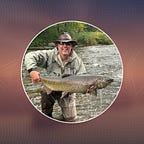The Ultimate Guide to Fly Fishing: Tips and Techniques for Beginners
Fly fishing is an artful and rewarding sport that combines skill, patience, and the beauty of nature. If you’re new to fly fishing, this guide will introduce you to the basics, offering essential tips and techniques to help you get started on your angling adventure.
Understanding Fly Fishing Gear
Before you make your first cast, it’s crucial to familiarize yourself with the essential gear required for fly fishing. The fundamental equipment includes a fly rod, reel, line, leader, tippet, and flies. Each component plays a specific role in the fishing process:
Fly Rod: The type of rod you choose should match the size of the fish you’re targeting. Rods are rated by weight, which corresponds to the weight of the line you’ll use.
Reel: The reel holds the line and assists in both casting and retrieving. A good quality reel with a smooth drag system is essential for handling larger fish.
Line: Fly lines are specialized for fly fishing and are heavier than traditional fishing lines, allowing you to cast the lightweight fly to your target.
Leader and Tippet: These connect the end of your fly line to the fly itself. The leader is thicker and tapers down to the tippet, which is thinner and less detectable to fish.
Flies: There’s a vast array of flies designed to mimic the insects and baitfish that fish feed on. Your choice of fly will depend on the species you’re targeting and the current conditions.
Casting Techniques
Casting is a foundational skill in fly fishing that takes practice to master. Here are some basics to get you started:
The Basic Cast:
- Start with your feet shoulder-width apart, holding the rod with a relaxed grip.
- Begin with the rod tip low and the line laid out in front of you.
- Raise the rod in a smooth motion, stopping when the rod reaches a 2 o’clock position to allow the line to extend behind you.
- Once the line is fully extended, move the rod forward in a controlled motion, stopping at the 10 o’clock position and allowing the line to lay down on the water.
Roll Cast: Ideal for tight spots with limited space for a back cast. Lift the rod tip high with a small amount of line extended in front of you, then quickly bring the rod forward, stopping sharply to roll the line out in front of you.
Practice: Spend time practicing your casting in an open area away from the water. This will help you develop muscle memory and improve your accuracy and distance.
Reading the Water
Understanding where fish are likely to be held is critical in fly fishing. Fish tend to look for areas where they can conserve energy and easily access food. Look for:
Riffles: Shallow areas with fast-moving water that are rich in oxygen and attract small aquatic insects.
Pools: Deeper, slower-moving water where fish rest and feed.
Runs: Channels of faster water between riffles and pools where fish often hold.
Structure: Logs, rocks, and undercut banks provide shelter and food for fish. Casting near these areas can be very productive.
Fly Selection
Choosing the right fly is both a science and an art. The key is to match the hatch, meaning you should select a fly that resembles the insects that are currently available to fish. Pay attention to:
Size: The fly should match the size of the natural insects or baitfish in the water.
Color: Color should also match the natural prey as closely as possible.
Behavior: Some flies are designed to float on the surface, while others are meant to sink. Observe the behavior of the natural prey and choose your fly accordingly.
Catch and Release
Conservation is a vital part of fly fishing. Practicing catch and release ensures the health and sustainability of fish populations. Handle fish with care, using barbless hooks for more accessible release, and keep the fish in the water as much as possible during the release process.
Fly fishing is a journey that combines the challenge of mastering technical skills with the serenity of being immersed in nature. As you progress, you’ll find that each day on the water brings new lessons and rewards. Remember, the ultimate goal is not just to catch fish but to enjoy the beauty and rhythm of the rivers and streams where the dance of fly fishing unfolds.
